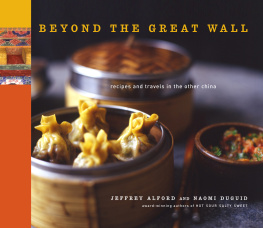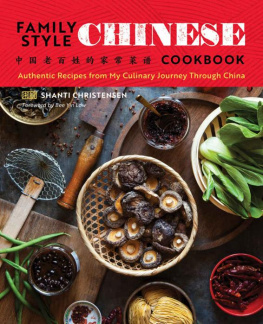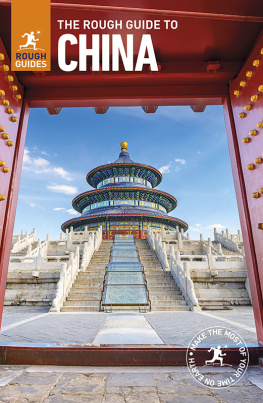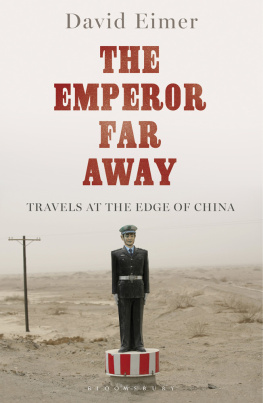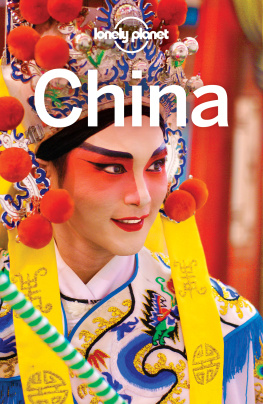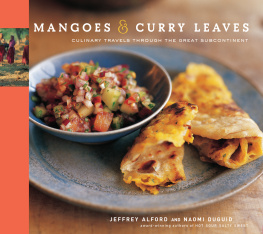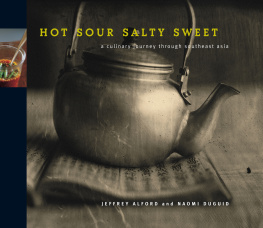ABOUT THE AUTHORS

JEFFREY ALFORD is a writer and photographer based primarily in northeast Thailand and Cambodia. He plants and harvests rice each year; helps raise frogs and several varieties of fish; and happily struggles along in three languages: Central Thai, Lao Isaan, and Northern Khmer. His forthcoming book, to be published in 2014, is tentatively titled How Pea Cooks: Food and Life in a Thai-Khmer Village. His earlier books, all co-written with Naomi Duguid, are Flatbreads and Flavors; HomeBaking; Seductions of Rice; Hot Sour Salty Sweet; Mangoes and Curry Leaves; and Beyond the Great Wall. Jeffrey is currently developing a series of intensive culinary tours through northeastern Thailand and western Cambodia (the Angkor Wat area) under the name of Heritage Food Thailand.
Authors Website: hotsoursaltysweet.com

NAOMI DUGUID is a writer, photographer, great cook, and intrepid traveler who explores the world through the lens of food. She is a contributing editor of Saveur magazine and writes the bimonthly Global Pantry column in Cooking Light. Every winter she conducts an intensive cultural-immersion-through-food course in Chiang Mai, Thailand, called ImmerseThrough, and also guides a food-focused tour to Burma. Duguid is the author of, most recently, Burma: Rivers of Flavor. Her earlier books, all co-written with Jeffrey Alford, are Flatbreads and Flavors; HomeBaking; Seductions of Rice; Hot Sour Salty Sweet; Mangoes and Curry Leaves; and Beyond the Great Wall. Her weekly posts at www.naomiduguid.blogspot.com explore ideas about food and life; she can be reached at naomiduguid.com. Her next project is a book that celebrates Persian culinary traditions, tentatively titled The Persian World.
ALSO BY JEFFREY ALFORD AND NAOMI DUGUID
Mangoes and Curry Leaves: Culinary Travels Through the Great Subcontinent
Homebaking: The Artful Mix of Flour and Tradition Around the World
Hot Sour Salty Sweet: A Culinary Journey Through Southeast Asia
Seductions of Rice
Flatbreads and Flavors: A Bakers Atlas
BEYOND THE GREAT WALL
Recipes and Travels in the Other China
JEFFREY ALFORD AND NAOMI DUGUID
Studio photographs by Richard Jung
Location photographs by Jeffrey Alford and Naomi Duguid
ARTISAN NEW YORK
Copyright 2008 by Jeffrey Alford and Naomi Duguid
Location photographs copyright 2008 by Jeffrey Alford and Naomi Duguid
Studio photographs copyright 2008 by Richard Jung
All rights reserved. No portion of this book may be reproducedmechanically, electronically, or by any other means, including photocopyingwithout written permission of the publisher.
PUBLISHED BY ARTISAN
A Division of Workman Publishing Company, Inc.
225 Varick Street
New York, NY 10014-4381
www.artisanbooks.com
Library of Congress Cataloging-in-Publication Data is available
eISBN 9781579655631
Design by Jan Derevjanik
Food styling by Linda Tubby
Props styling by Roisin Nield
Maps by Rodica Prato
CONTENTS
THE OTHER CHINA
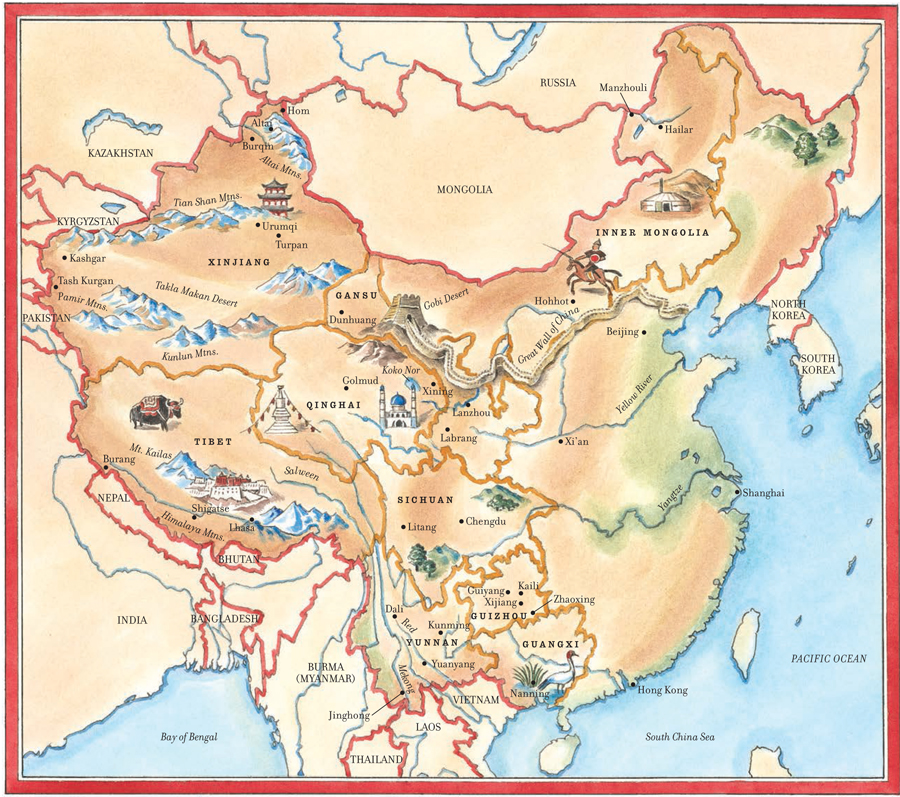
WHO LIVES WHERE Thirteen of Chinas Non-Han Peoples
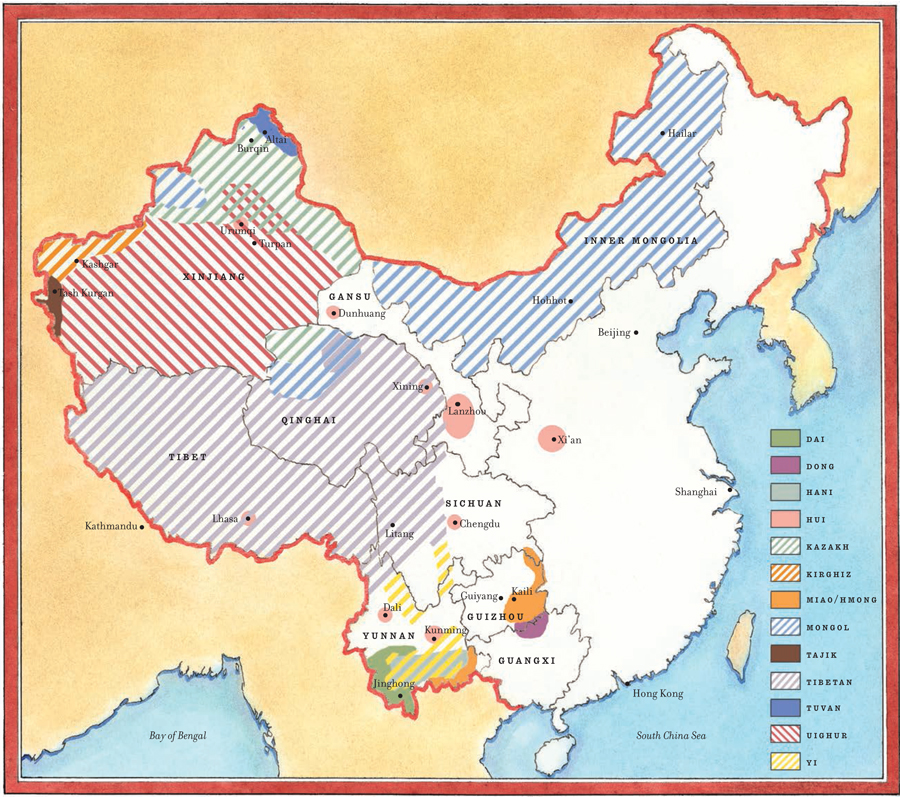
INTRODUCTION
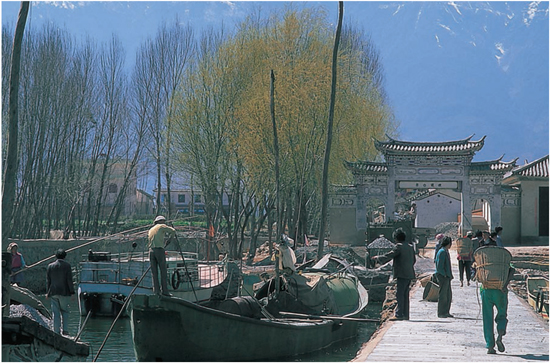
By Lake Er Hai, not far from Dali, Yunnan.
A map of the world would look very different if instead of marking political borders we outlined regions based upon food and culture. Spain, Great Britain, Indiaall would look dramatically different, but of all the countries in the world, the one that might look the most profoundly different is present-day China.
Three-fifths of the land area we now call China is historically the home of people who are not ethnically Chinese. Tibet, for example, was once a Himalayan nation almost equal in size to China. Similarly, the Silk Road region of the far west (present-day Xinjiang), now home to the Uighurs, as well as to Tajiks, Kazakhs, Tuvans, Tatars, Mongols, and Kirghiz, has often been outside Chinas control, sometimes united, sometimes fragmented into small fiefdoms. Mongols, whose culture is now split between two countries, had at one time the most powerful army in the world. And in the mountainous southwest, particularly in the provinces of Yunnan and Guizhou (which are culturally more closely related to neighboring Southeast Asia than to China), there is a greater diversity of people and cultures than in almost any other place in the world.
In this book our aim is to draw a new map of China, a food map that focuses on the outlying regions of present-day China, an area we refer to as beyond the Great Wall. and on the peoples who live there. Beyond the Great Wall is a metaphorical term that alludes to the historic attitude of the Han Chinese toward anyone not culturally Chinese, including people of other cultures who live within the borders of Chinathose the Han Chinese traditionally regarded as uncivilized or barbarian.
Weve traveled many times in these regions. In fact, it was in Tibet that we first met each other, in 1985. Long before, even as children, both of us had been fascinated by all the different regions beyond the Great Wall. Wed read about Tibet, its nomads and pilgrims, its rich religious history and culture, and about the mighty rivers that rise in Tibet and flow out in four directions. Wed read about Chinese Central Asia, about the old Silk Road and Marco Polo, and about the early explorers who set out across the Takla Makan Desert. Wed read about the Mongolian steppe and about Genghis Khan and his conquering Mongol army. These were places that easily filled the imagination: intensely blue skies, snow-capped mountains, camel caravans, and welcoming oases.
China opened its borders in the early 1980s, and so, separately and together, we traveled widely beyond the Great Wall over the course of the decade (travels we write about in the early chapters of this book). However, once other projects intervened, we spent little time here for six or seven years.
When we first began this project, we couldnt wait to start traveling, to revisit many of the places we loved, and to go farther afield. In our minds we could already taste the handmade noodles and tandoor flatbreads of the Uighur oases, and the Hami melons and grapes, the cumin-scented lamb kebabs, and the sun-drenched tomatoes and peppers. We could already smell the unbelievably crisp high-altitude air of Tibet and see our way across miles of open land with a deep blue sky above. In our minds we were already sitting cross-legged on the floor in traditional Dai bamboo houses in far southern Yunnan, eating sticky rice with our hands and dipping it into fiery-hot sauces.
But in 2005, on our first two solo trips to China for this book, neither of us was at all prepared for what we found. We were caught completely by surprise. Wed heard all the news about the worlds fastest-growing economy. Wed talked with fellow travelers about Chinas rapid changes. Wed seen documentaries and read books. But still we were unprepared. China in the twenty-first century was completely different from the China wed first encountered in the early 1980s.

